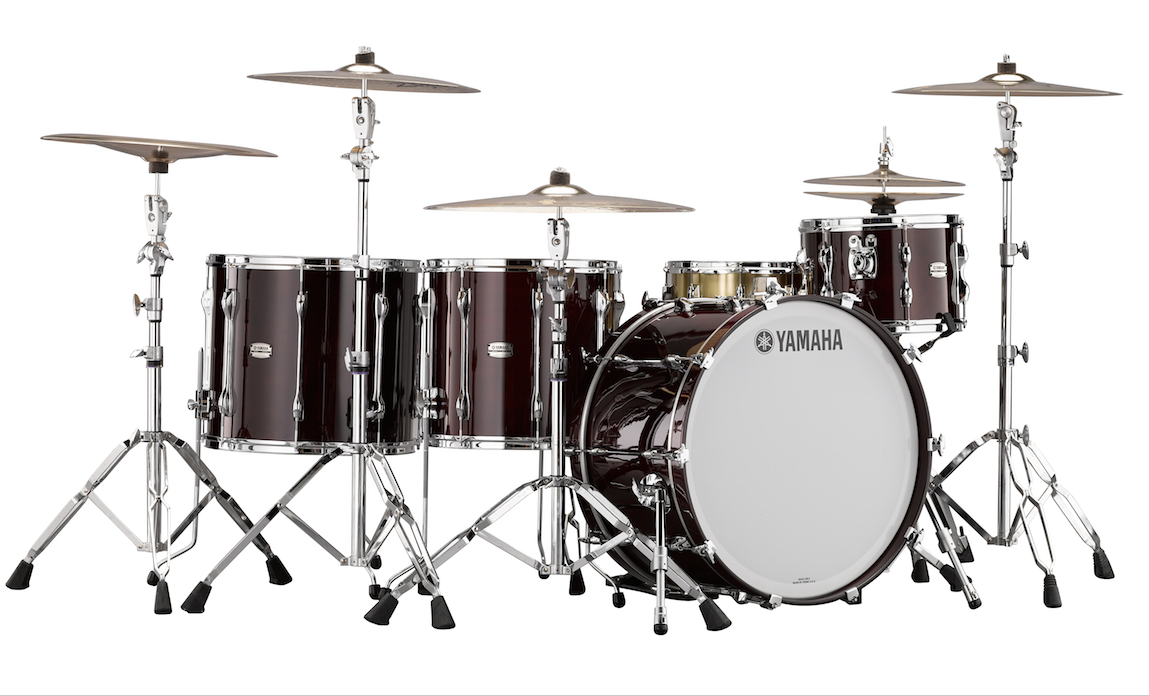
Yamaha has reintroduced its iconic Recording Custom series, often called the most recorded drum kit in history. Introduced in 1975, when it was known as the 9000 series, the original Recording Customs quickly became an industry standard, and their all-birch design helped to shape the modern drum set as we know it today.
Steve Gadd, a Yamaha player since 1976, worked with Yamaha over a period of three years to reintroduce, refine and improve the reissue of the Recording Customs. Whereas the original Recording Custom was designed for ’70s-era recording technology, the new version has been tweaked and modernized to accommodate today’s more sophisticated recording technology.
The new Recording Custom kits feature six-ply North American birch shells with a 30-degree bearing edge that delivers a sharp response. According to Yamaha, birch shells are a good choice for recording because they reduce unwanted noise and don’t tend to interfere with the resonance of other drums when set up in close proximity. Birch has a lower fundamental tone than the more traditional maple, giving it a distinct sound. In order to maximize the attenuating properties of the birch, Yamaha increased the weight of the lug. This ensures optimum sustain for the core sound, producing a crisp, articulate tone.
The Recording Custom kit comes in four colors, including solid black, classic walnut, surf green and real wood. The bass drum hoop is a natural wood finish. The hoops are triple-flanged steel, and the lugs extend the entire length of the drum, with a design that is definitely a nod to the original Recording Custom series.
I play-tested a six-piece Recording Custom kit with a 20- by 16-inch bass drum (18-, 22- and 24-inch bass drums are also available). The toms were 10 by 7.5 inches, 12 by 8 inches, 14 by 14 inches and 16 by 16 inches. The bass drum came with a metal lift to which the pedal attaches, similar to what you might see on a 16-inch kick. This design element, which was implemented at Gadd’s insistence, helps the beater strike the center of the drum and gives the kick a punchier sound, according to Yamaha. This is the first time I have played a 20-inch kick on a lift, and I had mixed feelings about it.
The bass drum had a deep, punchy sound right out of the box, and the entire kit was a breeze to tune. The toms had a nice interval between them, and the sound was everything you would want a Recording Custom to be: a rich tone with a quick decay that sounded killer just playing live with no EQ. As with the original Recording Customs, these drums come “pre-EQ’d.”
All the mounting hardware is rock-solid in true Yamaha fashion, and I was glad to see the floor toms using actual floor-tom legs. Mounting floor toms on stands never seemed like a solid enough solution to me. It results in too much play in the drums, while the tried-and-true floor-tom legs as found on the Recording Custom kits are a simple, solid solution without adding all the weight and cost of extra hardware.
The new Recording Custom snare definitely has a Gadd-like flair, as it has a more than casual resemblance to the classic Ludwig Supraphonic snare, but with a Yamaha twist. It’s a 14- by 5.5-inch, 1.2mm aluminum snare drum with a Q-type strainer choice of 10- or 20-strand snare wires. It has a beautiful crack and solid tone that matches the rest of the kit wonderfully. Recording Custom snares are also available in brass and stainless steel.
With this inspiring reissue, it’s safe to say the Recording Customs are back in a strong way and looking to keep their title as the most recorded drum set ever.